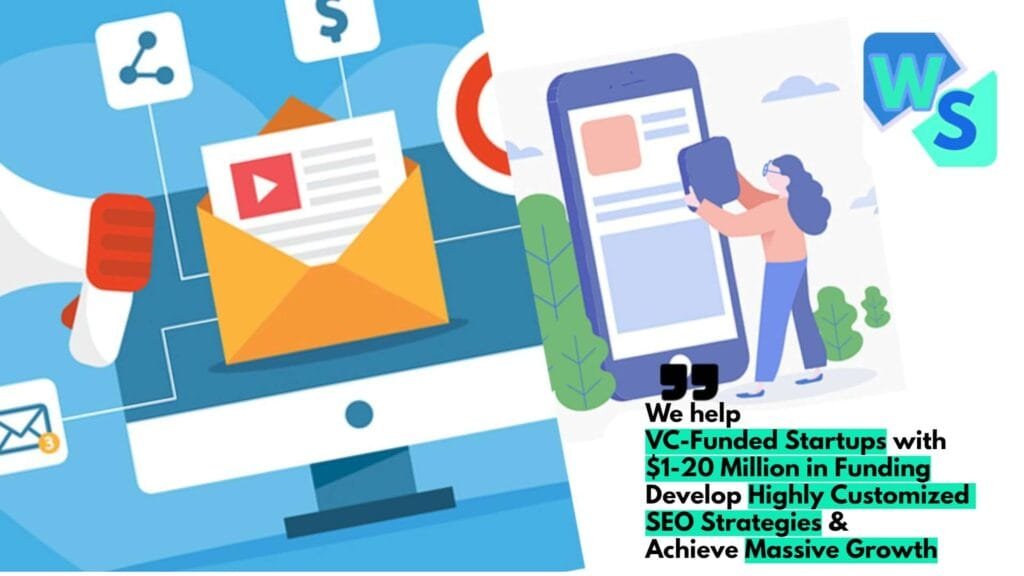Lead Generation Challenges
In the realm of finance marketing, generating quality leads presents unique hurdles that can significantly impact business growth and revenue. Here, I delve into two critical aspects: marketers’ perceptions and tailoring strategies.
Marketers’ Perceptions
Lead generation is undeniably one of the most daunting tasks for finance marketers. A staggering 61% of marketers consider it the most challenging aspect of their roles (UserGems). This sentiment stems from multiple factors, such as the increasing competition in the financial sector, the evolving digital landscape, and the ever-changing preferences of potential clients.
Common Challenges Faced by Marketers:
- Data Quality: Ensuring accurate and relevant data for potential leads.
- Lead Qualification: Identifying high-value leads from a pool of prospects.
- Conversion Rates: Improving the ratios of leads that convert to paying clients.
- Multi-channel Integration: Seamlessly integrating various marketing channels.
Tailoring Strategies
Creating a robust lead generation strategy isn’t a one-size-fits-all approach. It’s essential to develop a plan that aligns with the preferences, common queries, and solution-finding methods of your target audience (UserGems).
Key Components of a Tailored Strategy:
- Audience Research:
- Demographics: Age, income level, occupation.
- Behavior: Online activity, content consumption patterns.
- Pain Points: Financial challenges, common questions.
- Personalized Content:
- Educational Materials: E-books, whitepapers, webinars.
- Interactive Tools: Calculators, quizzes.
- Customer Stories: Case studies, testimonials.
- Multi-channel Approach:
- Email Marketing: Crafting targeted campaigns with verified email addresses.
- SEO and PPC: Focusing on keywords specific to finance, such as finance lead generation.
- Social Media Engagement: Utilizing platforms to build relationships and network effectively.
- Tracking and Analytics:
- Key Metrics: Lead source tracking, conversion rates.
- Feedback Loops: Regularly reviewing and tweaking strategies based on performance.
| Challenge | Solutions |
|---|---|
| Data Quality | Use verified email providers, like UserGems |
| Lead Qualification | Develop a detailed buyer persona and qualification criteria |
| Conversion Rates | Optimize landing pages and calls-to-action (CTAs) |
| Multi-channel Integration | Employ integrated marketing software solutions |
By addressing these challenges and tailoring lead generation strategies, financial services providers can significantly enhance their ability to attract and convert high-quality leads. For more insights on developing effective finance marketing strategies, check out our article on finance marketing strategies.
Importance of Email Addresses
In finance lead generation, collecting accurate and verified email addresses is a key component for successful outreach and conversions. Let’s explore why obtaining verified emails is so crucial and how time-saving tools can streamline this process.
Obtaining Verified Emails
Accurate and verified email addresses are essential for effective communication with prospects. They ensure that your outreach efforts are reaching the right individuals, thus significantly enhancing your [finance lead generation] strategies. Using tools like UserGems can be particularly beneficial for obtaining verified emails quickly.
Here are some benefits of using verified emails:
- Personalized Communication: Verified emails allow for targeted and personalized messaging, increasing the chances of engagement.
- Higher Conversion Rates: Accurate contact information ensures that your messages reach the intended recipients, improving conversion rates.
- Efficient Outreach: Verified emails reduce the likelihood of bounce rates, making your email campaigns more efficient.
| Benefits of Verified Emails | Impact on Lead Generation |
|---|---|
| Personalized Communication | Higher engagement rates |
| Accurate Outreach | Increased conversion rates |
| Reduced Bounce Rates | More efficient campaigns |
By leveraging email validation tools, finance business owners can streamline their lead generation process, ensuring they have reliable contact information for effective outreach.
Time-Saving Tools
Time-saving tools are indispensable in modern finance marketing. They help in automating the process of collecting and verifying email addresses, freeing up valuable time for more strategic tasks. One such tool is UserGems, which helps finance marketers obtain verified email addresses within seconds (UserGems).
Advantages of using time-saving tools include:
- Quick Verification: Tools like UserGems provide instant verification of email addresses, saving time and effort.
- Increased Productivity: Automating the verification process allows marketing teams to focus on other critical areas of their campaigns.
- Accurate Data: Ensuring the accuracy of email addresses means more effective targeting and higher engagement rates.
| Tools | Functionality | Benefit |
|---|---|---|
| UserGems | Instant email verification | Saves time |
| Clearbit | Data enrichment | Accurate targeting |
| Hunter.io | Email finding | Improved outreach |
Incorporating these tools into your lead generation strategy can vastly improve the efficiency and effectiveness of your [financial services marketing] efforts.
Understanding the impact of verified emails and utilizing time-saving tools are crucial elements in [digital finance marketing] for optimizing lead generation efforts. By prioritizing these aspects, finance business owners and marketing executives can achieve better results and drive growth in their businesses. For more tips and strategies, consider exploring our article on finance marketing strategies.
Account Hierarchy Insights
Understanding the nuances of account hierarchy can significantly enhance the efficiency of your sales strategy, directly impacting your finance lead generation.
Shortening Sales Cycles
A key challenge in financial services marketing is shortening the sales cycle. Finding a warm path into an account can help in this aspect. One effective strategy recommended by UserGems is to start from the bottom of the account hierarchy and work your way up. This approach allows you to gather insights and build rapport before engaging with decision-makers.
Here is a simple table giving an overview of a hypothetical sales cycle shortened by leveraging account hierarchy:
| Account Tier | Traditional Sales Cycle (days) | Optimized Sales Cycle (days) |
|---|---|---|
| Entry-Level Contacts | 30 | 15 |
| Mid-Level Managers | 60 | 40 |
| Decision Makers | 90 | 60 |
Leveraging SDRs and AEs
Leveraging Sales Development Representatives (SDRs) and Account Executives (AEs) is pivotal for effective lead generation in the finance industry. According to UserGems, utilizing insights gained by SDRs can provide you with a warm introduction into an account, making your engagement with AEs more purposeful and efficient.
SDRs play an essential role by:
- Qualifying leads.
- Gathering initial insights and data.
- Developing relationships with lower-level contacts.
AEs, on the other hand, take the lead by:
- Engaging with mid and upper-level contacts.
- Presenting tailored financial solutions.
- Closing sales efficiently.
| Role | Responsibilities |
|---|---|
| SDRs | Qualify leads, gather initial insights, develop relationships |
| AEs | Engage with decision-makers, present solutions, close sales |
Maximizing the effectiveness of your SDRs and AEs not only helps in shortening the sales cycle but also enhances the overall quality of your financial services marketing efforts. By strategically utilizing account hierarchy insights and leveraging your sales team, you can ensure a more streamlined and effective approach to your finance lead generation campaigns.
Explore more about modern strategies for digital finance marketing to stay ahead in the competitive landscape.
Quality Sourcing Strategies
Effective lead generation hinges on the quality of your sourcing strategies, especially in the finance sector. As a finance business owner or marketing executive, focusing on sourcing strategies that drive revenue and prioritizing marketing sources are crucial for success.
Revenue-focused Sourcing
In finance lead generation, it’s pivotal to concentrate on sources that directly contribute to revenue. Understanding where your high-value leads originate can help tailor your strategies for better results. Use data analytics to assess the conversion rates from various sources and focus on those with the highest ROI.
| Source Type | Conversion Rate | Average Revenue per Lead |
|---|---|---|
| Organic SEO | 15% | $300 |
| PPC Advertising | 12% | $250 |
| Email Campaigns | 9% | $200 |
| Social Media Ads | 14% | $280 |
| Referrals | 25% | $500 |
Ensuring your strategies align with these high-performing sources can considerably enhance your lead generation efforts. Utilize tools such as Google’s Keyword Planner to identify high-converting keywords and optimize your content for those targets (The Financial Brand). For more insights on optimally leveraging digital tools, visit our article on financial marketing tools.
Marketing Source Prioritization
Prioritizing your lead sources based on their effectiveness can streamline your marketing efforts. UserGems, for instance, offers a service that provides verified email addresses, saving you precious time and ensuring you’re reaching valid leads (UserGems). Accurate email addresses are crucial for the scalability of your campaigns.
Focus on content marketing and SEO, as they are integral parts of a successful financial lead generation strategy. Sharing quality, informative content helps build trust and brand exposure, which is essential in the finance sector (Apexure). Prioritize content sharing methods that promote reliability over paid advertisements.
By concentrating on high ROI source types and utilizing time-saving tools, you can refine your approach to sourcing quality leads. Explore our detailed guide on finance content marketing for more effective strategies.
In summary, revenue-focused sourcing and prioritizing marketing sources can significantly enhance the quality and efficiency of your lead generation efforts. Balancing high-converting channels with advanced tools will drive your financial business towards sustained growth. For additional insights on modern lead generation techniques in finance, read our article on finance marketing strategies.
Modern Lead Generation Techniques
In the realm of finance marketing, applying innovative lead generation techniques is essential for driving business growth. We’ll explore the efficacy of digital versus traditional methods and the significant impact of social media.
Digital vs. Traditional Methods
Understanding the distinction between digital and traditional lead generation methods is pivotal for financial businesses. Traditional methods, such as direct mail, telemarketing, and print advertisements, have been long-standing tools in lead generation. However, the rise of digital methods has ushered in more efficient and scalable techniques.
| Lead Generation Method | Advantages | Disadvantages |
|---|---|---|
| Traditional | Personal touch, Targeted Demographics | Limited reach, Higher costs |
| Digital | Broader audience, Cost-effective, Measurable | Less personal, Over-saturation |
Digital methods, such as email marketing, search engine optimization (SEO), and content marketing, offer numerous advantages. They provide broader reach and are more cost-effective and measurable compared to traditional methods. For instance, inbound marketing is considered the future of lead generation for financial services. This encompasses blogging, video creation, webinars, SEO, and case study publications to generate organic leads (O8 Agency).
Effective digital strategies should be tailored to the specific audience’s preferences, addressing common queries and methods of finding solutions (UserGems). For more on tailoring strategies, visit our article on finance marketing strategies.
Social Media Impact
Social media plays a pivotal role in modern lead generation, especially in the financial services sector. Platforms like LinkedIn, Twitter, and Facebook allow professionals and brands to build trust with their target audience through consistent networking and sharing relevant content (Apexure).
Networking on platforms such as LinkedIn can drive traffic to lead-generating landing pages by sending direct messages to potential leads, filtering contacts, and engaging with prospects’ activities. It creates opportunities for organic interactions and relationship-building, crucial for trust-building in the financial industry.
Quality content sharing on social media is vital for brand exposure. Informative content, such as blog posts, infographics, and videos, is often perceived as more trustworthy than paid advertisements (Apexure). This type of content helps in establishing your brand as a thought leader and builds credibility among your audience. For insights into content sharing strategies, visit our page on finance content marketing.
Leveraging these techniques can significantly enhance your lead generation efforts, ensuring that your financial business remains competitive and continues to grow in a rapidly evolving digital landscape. For more on leveraging digital tools, check out our article on digital finance marketing.
Leveraging Social Media
Effectively leveraging social media is crucial for driving finance lead generation in the financial sector. In this section, I’ll explore strategies for building trust online and conducting effective networking to capture and convert leads.
Building Trust Online
Social media plays a significant role in financial services lead generation. It allows professionals and brands to build trust with their target audience by consistently networking and sharing relevant content (Apexure). Here are some ways to build trust online:
- Consistent Branding: Maintain a consistent brand voice and aesthetic across all social media platforms.
- Show Expertise: Share insightful content that showcases your expertise in the finance industry. This can include blog articles, white papers, and case studies.
- Engagement: Actively engage with your audience by responding to comments, participating in discussions, and sharing user-generated content.
- Testimonials and Reviews: Post testimonials and reviews from satisfied clients to build credibility and reliability.
| Trust-Building Activity | Impact Level |
|---|---|
| Consistent Branding | High |
| Expert Content Sharing | High |
| Audience Engagement | Medium |
| Testimonials | High |
For more strategies, check out our article on finance content marketing.
Effective Networking
Networking on social media platforms, especially LinkedIn, is vital for driving traffic to lead-generating landing pages and capturing potential leads. LinkedIn allows for direct messaging, filtering contacts, and interacting with prospects’ activities (Apexure).
- Personal Branding: Encourage salespeople to build their personal brand. This enhances their credibility, reliability, and authority, thereby attracting more leads to the business.
- Direct Outreach: Send personalized messages to potential leads. Tailor these messages to address their specific needs and pain points.
- Content Sharing: Share high-quality content that provides value to your audience. This can include industry news, financial tips, and thought leadership articles.
- LinkedIn Groups: Join and participate in relevant LinkedIn groups. This helps in engaging with a targeted audience and establishing your brand as a thought leader.
| Networking Strategy | Effectiveness |
|---|---|
| Personal Branding | High |
| Direct Outreach | High |
| Content Sharing | High |
| LinkedIn Groups | Medium |
For more tips on effectively networking on social media, visit our section on finance marketing strategies.
By effectively building trust and networking on social media, financial businesses can enhance their lead generation efforts. Platforms like LinkedIn provide ample opportunities to connect with potential clients and nurture those relationships to drive business growth. For tools to aid in this process, explore our financial marketing tools.
Content Sharing Strategies
Effective content sharing strategies are paramount in the realm of finance lead generation. For finance business owners, CEOs, and Marketing Executives, understanding the significance of brand exposure and trust-building content can make or break a lead generation campaign.
Brand Exposure Importance
Creating a lead generation strategy tailored to specific audience preferences and queries (UserGems) enhances your brand’s visibility. Brand exposure is critical because it positions your financial services in front of potential clients who may not be aware of your offerings.
Brand exposure can be increased by:
- Consistent Social Media Presence: Regularly posting on platforms like LinkedIn, Twitter, and Facebook to maintain visibility. See how social media impacts lead generation here.
- Guest Blogging: Writing articles on prominent financial websites to reach a broader audience.
- SEO Optimization: Utilizing keywords effectively to ensure your content ranks highly in search engines. Learn more about SEO here.
Trust-Building Content
Building trust with your audience is essential, especially in the financial sector. Content perceived as valuable and informative can build stronger relationships than overt advertisements (Apexure).
Here’s how to create trust-building content:
- Educational Content: Share content that educates your audience on financial topics. This can include webinars, white papers, and blog posts. Explore finance content strategies for more insights.
- Client Testimonials: Displaying real client success stories builds credibility with prospects.
- Interactive Content: Use tools like calculators or quizzes to engage your audience.
A breakdown of trust-building content types:
| Content Type | Purpose |
|---|---|
| Educational Articles | Educate audience |
| Webinars | Interactive learning |
| Case Studies | Real-life examples |
| Infographics | Visual storytelling |
| Client Testimonials | Build credibility |
Leverage these strategies to enhance your lead generation efforts and grow your finance business. For a deeper dive into these tactics, visit our page on digital finance marketing and explore the latest finance marketing trends.
Utilizing Digital Tools
In the realm of finance lead generation, leveraging the right digital tools can make all the difference. As a finance business owner, CEO, or Marketing Executive, understanding how to optimize SEO and create effective lead-generating landing pages is crucial.
SEO Optimization
Search Engine Optimization (SEO) is fundamental for driving organic traffic to your website. By optimizing your site for search engines, you can ensure that your financial services are visible to potential clients who are actively searching for solutions. Proper SEO optimization involves several key practices:
- Keyword Research: Identifying relevant keywords that potential clients are using to search for financial services is crucial. This helps in crafting content that meets their needs and ranks high in search results.
- On-page SEO: This includes optimizing titles, meta descriptions, headers, and content with targeted keywords. Ensure your website architecture is user-friendly and includes internal links to important pages like financial services marketing and finance influencer marketing.
- Technical SEO: This covers optimizing your website’s backend, including improving load times, mobile-friendliness, and ensuring an SSL certificate is in place.
An effective SEO strategy can dramatically enhance your finance marketing efforts, turning organic traffic into valuable leads.
Lead-Generating Landing Pages
Creating compelling landing pages is essential for converting visitors into leads. A well-designed landing page should be focused on a single objective—usually capturing the user’s information through a form.
- Clear Value Proposition: Ensure the headline and subheader communicate the value of your services instantly. Include a concise summary that resonates with the needs of your target audience.
- Strong Call-to-Action (CTA): Your CTA should be compelling and clear, encouraging visitors to take immediate action, such as “Get a Free Consultation” or “Download Our Financial Planning Guide.”
- Social Proof: Adding testimonials, reviews, or case studies can build trust and validate the expertise of your financial services, making users more likely to convert.
- Less is More: Minimize distractions by removing unnecessary navigation links and focusing entirely on the conversion goal. Use bullet points and short paragraphs to make content easily digestible.
Here’s an example table summarizing effective features of a lead-generating landing page:
| Feature | Description |
|---|---|
| Headline | Clear and concise value proposition |
| Call-to-Action (CTA) | Strong, action-oriented phrases |
| Social Proof | Testimonials, reviews, and case studies |
| Minimal Distractions | Focused content, minimal navigation |
A well-crafted landing page, in conjunction with an optimized SEO strategy, can significantly boost your finance content marketing efforts, turning curious visitors into qualified leads. For more insights on leveraging digital tools and strategies, explore our section on financial marketing tools.





















